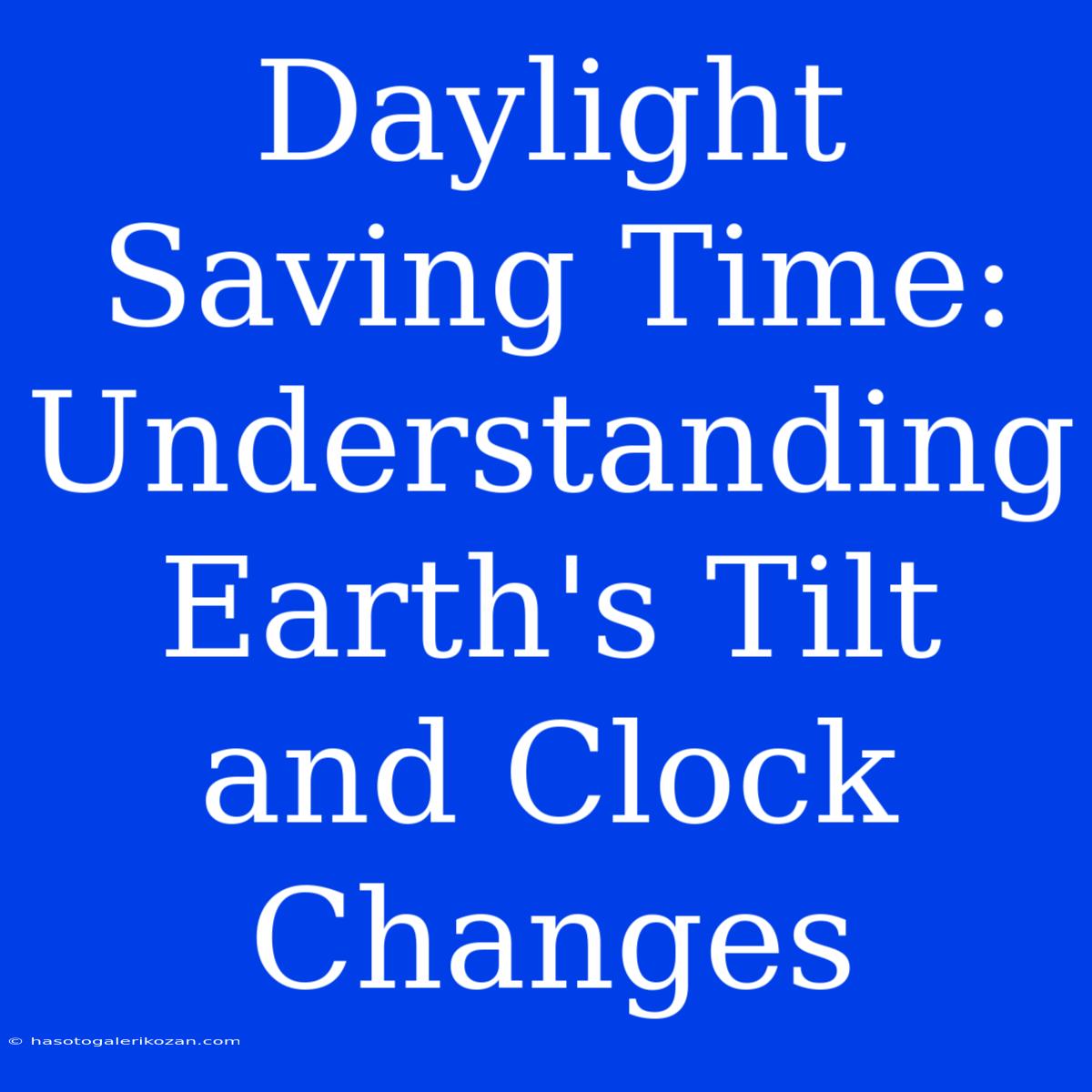Daylight Saving Time: Understanding Earth's Tilt and Clock Changes
Daylight Saving Time (DST), also known as summer time, is a practice of adjusting clocks forward by an hour during warmer months. This practice aims to make better use of daylight hours by shifting the clock forward, allowing people to enjoy more daylight in the evening. But have you ever wondered why we need to adjust our clocks in the first place? The answer lies in the Earth's tilt and its impact on daylight hours throughout the year.
Earth's Tilt and Seasonal Changes
Our planet Earth is tilted on its axis at an angle of approximately 23.5 degrees. This tilt is the primary reason for the changing seasons we experience. As the Earth orbits the sun, different parts of the planet receive varying amounts of sunlight throughout the year. During summer, the hemisphere tilted towards the sun experiences longer days and shorter nights. Conversely, the hemisphere tilted away from the sun experiences shorter days and longer nights.
The Need for Daylight Saving Time
In the northern hemisphere, the sun rises earlier and sets later during the summer months. This abundance of daylight in the evenings presents an opportunity to maximize daylight hours for activities like outdoor recreation, work, and leisure. However, the earlier sunrise can lead to wasted daylight in the morning, as many people are still asleep during the sun's peak hours.
Daylight Saving Time was conceived to shift the clock forward by an hour, effectively moving the "peak" daylight hours from the morning to the evening. This allows people to enjoy more daylight in the evening, while also promoting energy savings as people need less artificial lighting.
How DST Affects our Clocks
During the transition to Daylight Saving Time, clocks are moved forward by one hour. This means that when the clock strikes 2:00 AM on the designated day, it immediately becomes 3:00 AM. This adjustment effectively "shortens" the night by one hour and extends the day.
The transition back to Standard Time in the fall involves moving the clocks back by one hour, effectively lengthening the night by one hour.
Benefits and Criticisms of DST
Daylight Saving Time has been a controversial topic, with proponents and opponents arguing its merits and drawbacks.
Proponents:
- Energy Savings: Supporters argue that DST reduces energy consumption by decreasing the need for artificial lighting in the evening.
- Increased Economic Activity: The extended daylight hours are said to encourage outdoor activities and boost economic activity, particularly in sectors like tourism and retail.
- Reduced Crime Rates: Some research suggests that DST may lead to reduced crime rates, as there is more daylight in the evening.
Critics:
- Health Concerns: Opponents argue that DST can disrupt sleep patterns and lead to health problems like fatigue and sleep deprivation.
- Disruption to Schedules: The shift in time can cause scheduling difficulties, particularly for industries with 24/7 operations, such as transportation and healthcare.
- Inconsistency: Some argue that DST is not consistent, as different regions of the world observe it at different times, which can cause confusion.
Conclusion
Daylight Saving Time remains a complex issue with both benefits and drawbacks. While it offers the advantage of extending daylight hours, it also comes with potential disruptions to sleep patterns and scheduling. As we continue to debate the merits of DST, understanding the science behind its origins and its impact on our lives is essential.
